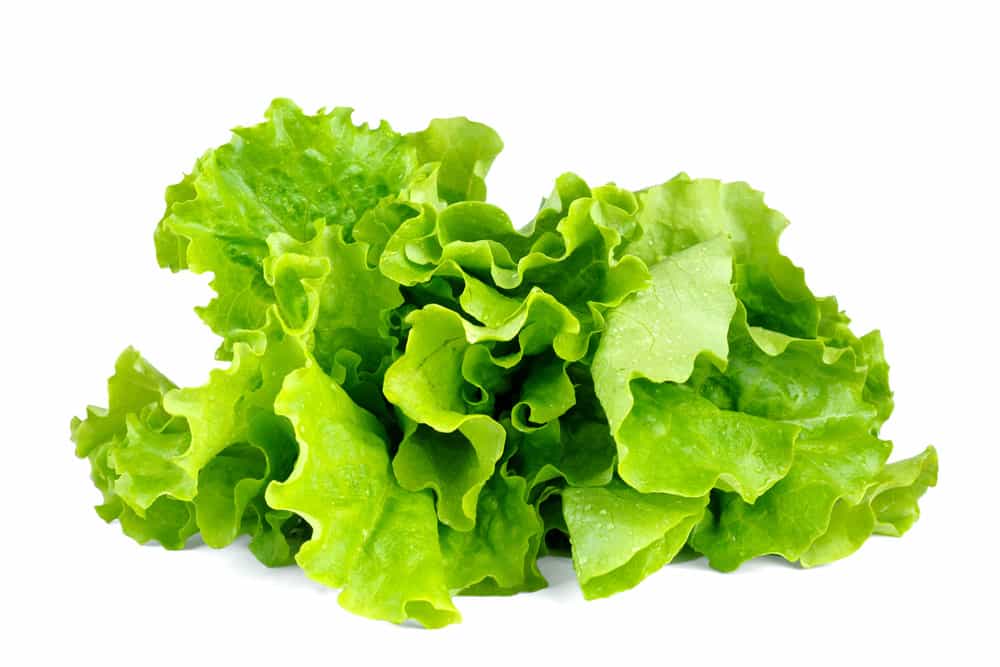Green Leaf Lettuce Facts:

Nutrition Facts
Serving Size 1 Cup - Shredded
Servings Per Container 1
Amount Per Serving
Calories 5
Calories from Fat 0
% Daily Value*
Total Fat 0g
0%
Saturated Fat 0g
0%
Trans Fat 0g
Cholesterol 0mg
0%
Sodium 10mg
0%
Total Carbohydrate 1g
0%
Dietary Fiber 0.5g
2%
Sugars 0.3g
Protein 0.5g
Vitamin A
53%
Vitamin C
11%
Calcium
1%
Iron
2%
Vitamin E
1%
Vitamin K
78%
Thiamin
2%
Riboflavin
2%
Niacin
1%
Vitamin B6
2%
Folate
3%
Magnesium
1%
Phosphorus
1%
Potassium
2%
Copper
1%
Manganese
5%
*Percent Daily Values are based on a 2,000 calorie diet. Your daily values may be higher or lower depending on your calorie needs.
PQ (Protein Quality) x PDCAAS (Protein Digestibility Corrected Amino Acid Score) - 66
Additional Contents
Potential Health Benefits
- powerful anti-cancer properties
- increased cardiovascular disease protection
- digestive system health boost
- immune system health boost
- bone & joint health boost
- skin & eye health boost
- lower "bad" cholesterol
- promote weight-loss
- energy boost
- antioxidant
Potential Athletic Benefits
- Increase digestive system health for improved nutrient retention and an overall body function increase.
- Help protect bones and joints from excessive breakdown from high volume training regimens.
- Help protect skin and eyes from UV exposure damage and the degenerative effects of aging.
Glycemic Index Rank
<15 out of 100
| Rank | Value |
|---|---|
| Low Glycemic | less than 55 |
Food Sensitivity Rank
0.6 to 1 ratio
| Rank | Value |
|---|---|
| Low for Fructose Sensitivity | less than 1 (fructose to glucose ratio) |
Green leaf lettuce is a light and highly nutritious food that most any individual can benefit from. It contributes to many potential health benefits such as anti-cancer protection, bone and joint protection, improved immune system function, lower cholesterol, and increased eye and skin health. Green leaf lettuce can also be enjoyed daily by most (if you do not react negatively).
- Carotenoids: Potential Allies of Cardiovascular Health?
- Role of Phytochemicals in Colorectal Cancer Prevention
- Advances in the Researches of Lutein and Alzheimer's Disease
- Cardiovascular Diseases: Oxidative Damage and Antioxidant Protection
- Photodynamic Therapy with the Novel Photosensitizer Chlorophyllin-F Induces Apoptosis and Autophagy in Human Bladder Cancer Cells

707kcal/serving

387kcal/serving

chlorophyll
is a very important biomolecule found inside many green plants. It is used to conduct photosynthesis by absorbing sunlight and converting it into energy. Chlorophyll is considered a superoxide for its incredible ability to protect cells from oxidative damage. It is also currently being researched as becoming a common cancer therapy protocol.
Sources include: USDA
***All-Body Fitness takes no responsibility for the accuracy of the information provided above. Please contact a medical doctor or a registered dietitian for nutrition advice.


